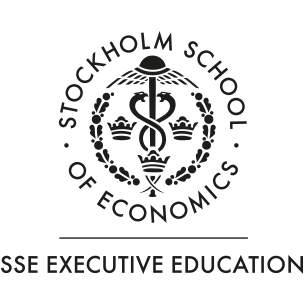Happiness – a profitable investment?
From being a personal matter happiness has begun attracting the interest of politicians worldwide. Maybe this is because leading researchers such as Professor Richard Layard of the London School of Economics, Nobel laureate Daniel Kahneman, and Krueger Allan (Barack Obama’s economic policy adviser) argue that insights derived from research about happiness should be integrated into political decision-making. Now business leaders are showing interest, which is reflected in SSE Executive Education’s seminar program.
In England the government established the “Whitehall Wellbeing Working Group” to examine how government could pursue policies to make citizens happier. In France, Nicolas Sarkozy ordered a “happiness enquiry” by Nobel economics laureates Joseph Stiglitz and Amartya Sen. Their report showed that current measures of welfare are incomplete and misleading. They believe that happiness, alongside economic and social indicators, should be included in measures of the overall welfare of society. This view is shared by the UN and the OECD, according to their latest reports on the subject.
Now the business sector is becoming interested in how the results of happiness research can be used in strategic HR work. In response SSE Executive Education is initiating a collaboration with Nadav Shir, who researches in this field at the Stockholm School of Economics. Originally from Israel, Nadav is a pioneer in research on the links between well-being and entrepreneurship and innovation. He has recently been a guest researcher at New York University.
– My research shows that emotions are an important driver of entrepreneurship. One of the biggest challenges we face in the workplace today is to reduce depression and stress syndromes. Studies on the subject have previously focused primarily on how to deal with the negative effects of mental illness and stress. Well-being, however, requires mental health rather than the absence of mental illness – and that’s an important distinction for understanding my research, says Nadav.
What is happiness?
There are many definitions of happiness, but in research happiness is usually defined as having two components – one cognitive and the other affective. The former is called “life satisfaction”, an intellectual evaluation of how pleased we are with our lives. The latter is about feelings – our “well-being”. A happy person is therefore someone who both feels at ease and considers themselves to be living a good life.
In the field of economics, happiness research has primarily focused on studying life satisfaction, not well-being. Nadav Shir’s research is about how our emotions and behaviours are related to entrepreneurship. He has followed 3100 Swedes with different backgrounds, and from a special study of the entrepreneurs he has come to conclusions that confound the old adage “necessity is the mother of invention”. Rather he finds there is a positive relationship between well-being and ingenuity.
– The happiest people are engaged in meaningful things that they feel comfortable with and that they feel that they have control over. They are not striving for fame, power or money. It’s the same for true entrepreneurs (and intrapreneurs) and this is perhaps what contributes to them being amongst the happiest in society – even though they both work more and have lower incomes than average, says Nadav.
How do you become happy?
According to Nadav it’s the simple things that lead to happiness. For example, being loved and appreciated, feeling competent and having power to make decisions. But what is the significance of socio-demographic variables such as age, income and education, when it comes to well-being?
– These are of some importance. We know that people who have a faith, and/or live with a partner, are slightly happier than average. This has to do with our needs to belong and for meaning, which religious beliefs can satisfy. But the socio-demographic variables do not explain even 10 percent of the variance! The most significant factors affecting your well-being are what you do in life, your attitude to your abilities and your potential. Genetic inheritance is not so important – and this is something we can’t do anything about it. Possibly your inheritance limits your range of options, but you decide how and in which direction you move within the range, says Nadav.
In times of increased stress and burnout, a slower pace, reduced working hours and lower expectations would seem to be the natural remedy for enhancing well-being, but Nadav does not agree.
– No, this is a misunderstanding. Many people believe that stress is bad, and it isn’t always so. Stress can be a resource, something that will help prepare you for a task. It’s all about attitude. Do you say to yourself that you are stressed and need to relax, or do you pep yourself up with the thought that the task is something that you really want to do? If you do the latter, the stress becomes a resource rather than limitation. So the focus should be on finding ways to prevent stress from arising, not on reducing workloads, but rather on helping people feel that they are doing something that is meaningful and interesting.
Stimulating happiness
From his theoretical research Nadav has developed several practical techniques for improving well-being and encouraging entrepreneurship in the workplace. He will describe some of these in a short program on 19-20 January 2016. One of the techniques is about reward systems.
– Often we are too focused on the rewards that will be given for achievements, but studies show that unexpected rewards just before and during an innovation project can have very positive effects on creativity, says Nadav.
Nadav also lectures talent and development: how to go from a fixed mindset, where people’s abilities and potential are regarded as immutable, to a growth mindset where potential is considered to be elastic. The approach you take has major implications for well-being and how you tackle everything from challenges to criticism and adversity in life.
Other techniques tackle job satisfaction, playfulness for promoting creativity and innovation and the role of the physical environment, such as light, music and colour selection.
Participants in the workshop will gain a sound theoretical understanding of what makes for a happy life and how to focus on the right things. They will also learn about practical tools for stimulating well-being at work.


